Phone:
(701)814-6992
Physical address:
6296 Donnelly Plaza
Ratkeville, Bahamas.
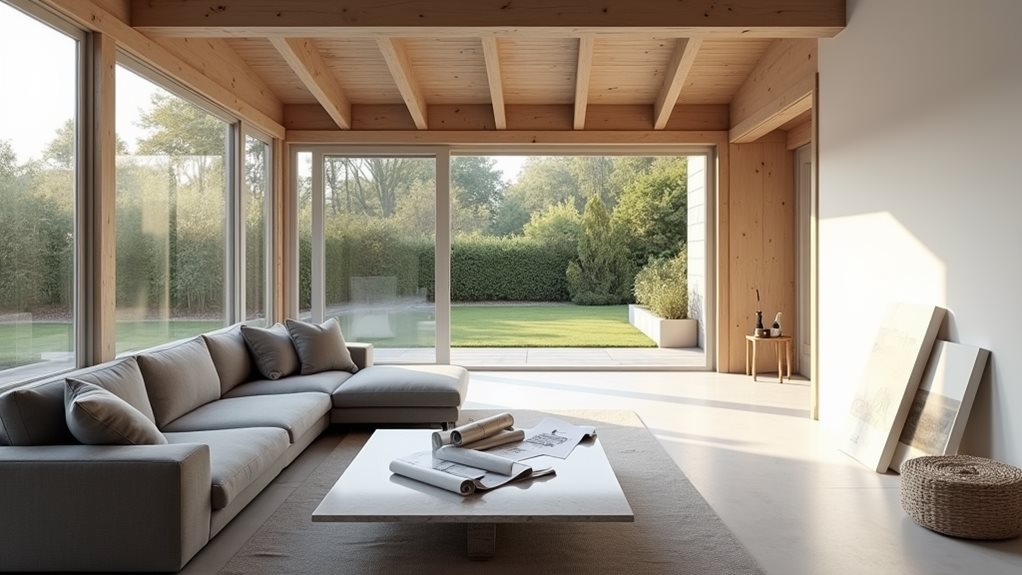
Discover game-changing living room extension ideas that transform your space, from seamless indoor-outdoor flow to strategic lighting solutions.
Planning your perfect living room extension starts with establishing clear objectives and evaluating your lifestyle needs. You'll need to evaluate available space, consider natural lighting, and determine your desired atmosphere, whether it's cozy or sophisticated. Start by creating a detailed floor plan, consulting local building regulations, and setting a realistic budget with a 10% contingency. Focus on maximizing natural light through strategic window placement and creating seamless indoor-outdoor connections. The journey to your dream extension holds numerous design possibilities and practical considerations to explore.
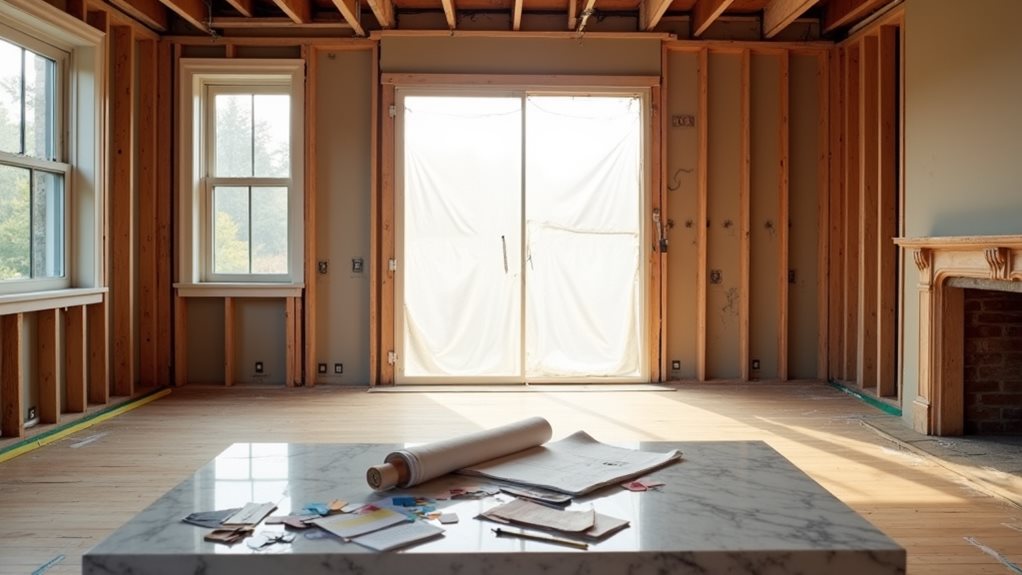
Why commence on a living room extension without first establishing clear objectives? Your journey toward creating the perfect living space begins with understanding exactly what you're hoping to achieve through this transformation.
Start by evaluating your lifestyle needs and how they'll shape your space utilization. You'll want to reflect on whether you're looking for a cozy family gathering spot, a sophisticated entertainment area, or perhaps a multi-functional space that adapts to various activities. Consider how incorporating a seamless connection between your indoor and outdoor spaces can enhance your living experience.
Think about natural lighting, storage requirements, and how you'll move through the space. Design flexibility is essential – you're not just planning for today but for years to come. Consider incorporating bi-fold doors to create a seamless connection between your indoor and outdoor spaces.
Before you can move forward with your living room extension plans, you'll need to carefully evaluate your current room layout and identify potential growth areas.
Effective project execution requires you to assess local zoning to ensure your extension plans comply with building regulations and permit requirements.
You'll want to assess how your existing furniture arrangement and traffic patterns influence the space's functionality, noting any underutilized areas that could be incorporated into your extension.
Taking precise measurements and creating a detailed floor plan will help you visualize where your living room can expand most effectively, whether it's extending outward into your garden space or reconfiguring internal walls.
A successful living room extension starts with a thorough evaluation of your current room layout.
You'll want to analyze your space utilization carefully, considering how your furniture arrangement impacts daily activities. Before making any changes, take time to measure your space and identify key architectural features that'll influence your design decisions.
When planning your living room extension, identifying potential growth areas requires careful evaluation of both your property's limitations and its hidden opportunities.
You'll want to assess your home's side return potential, which often provides an ideal space for expanding your living area while maintaining the property's character. Additionally, consider a garden extension that could seamlessly connect your indoor and outdoor spaces.
Start by examining your property's structural elements, including load-bearing walls and foundation strength.
You'll need to evaluate how natural light will flow through your proposed extension – consider incorporating skylights or strategically placed windows.
Don't forget to check local zoning regulations and obtain necessary permits before proceeding.
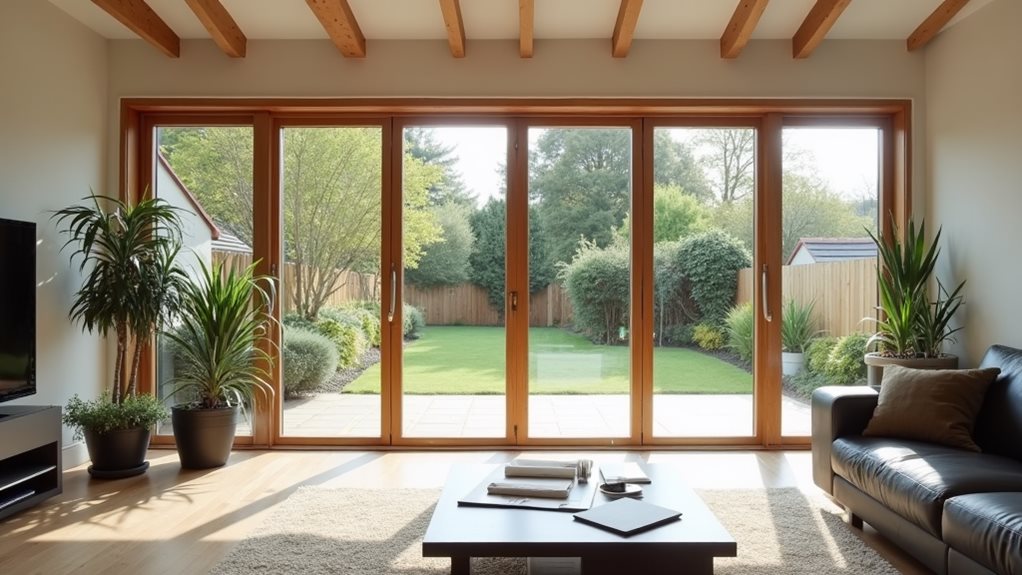
When planning your living room extension, you'll want to maximize natural light through strategically placed windows and glass doors, creating an airy, inviting atmosphere that connects seamlessly with the outdoors.
Thoughtful space flow design guarantees your extended living area feels cohesive, with carefully positioned doorways and openings that guide movement naturally between old and new spaces.
You can enhance this flow by incorporating open-plan elements and selecting furniture arrangements that create distinct functional zones while maintaining visual continuity throughout the expanded room.
Natural light serves as the cornerstone of any well-designed living room extension, transforming ordinary spaces into vibrant, welcoming environments that feel both spacious and energizing.
You'll want to maximize this natural illumination through strategic window treatments and thoughtful design choices. Consider incorporating floor-to-ceiling windows or sliding glass doors on south-facing walls, while complementing them with light color palettes that reflect and amplify brightness throughout your space.
Successful living room extensions rely heavily on intelligent space flow design principles that orchestrate movement and functionality throughout your expanded area.
For ideal flow optimization, you'll want to maintain specific clearances: 36 inches between walls and seating, and 30-36 inches between major furniture pieces. Your furniture arrangement should create clear pathways of at least 48 inches between rooms for comfortable navigation.
When planning your layout, consider incorporating multi-functional pieces that enhance versatility while maintaining proper spacing.
You'll find that strategic placement of items like coffee tables (keeping 16-18 inches from seating) and area rugs (with 24-36 inches of clearance) can greatly impact movement patterns.
Remember to divide your space into distinct functional zones while ensuring each area flows seamlessly into the next, creating an inviting atmosphere that your family will love.
As homeowners seek to maximize their living spaces, several extension styles have emerged as particularly effective solutions for modern homes.
You'll find that choosing the right layout and style can transform your living area into a versatile, welcoming space that meets your family's needs.
Whether you're considering a wrap-around extension for maximum ground floor space or a glazed addition to bring in natural light, there are options to suit every home's character.
When planning your extension, consider how different styles will complement your existing architecture and enhance your daily living patterns.
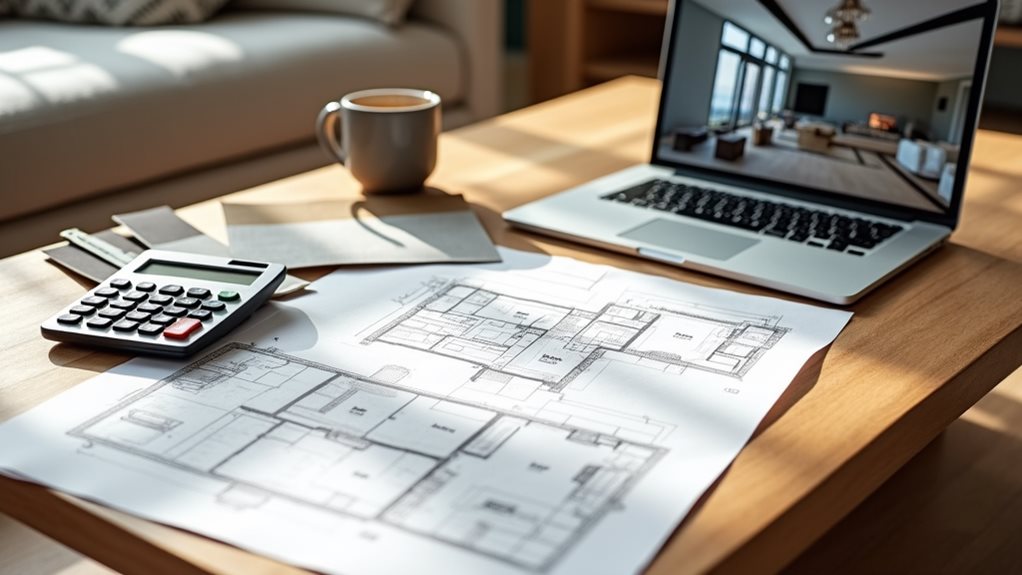
When planning a living room extension, understanding the financial aspects can make the difference between a smooth project and a stressful experience.
Start your cost estimation by allocating 20-30% of your budget for interior finishes and set aside 10% for contingencies. You'll want to explore various financing options while maintaining a realistic approach to your financial planning.
To keep costs manageable, consider implementing smart strategies like choosing standard-sized materials, simplifying your design, and obtaining multiple quotes from builders.
You're not alone in wanting to create a beautiful space while staying within budget – many homeowners have successfully navigated this challenge by working with experienced professionals and carefully managing their resources.
Before breaking ground on your living room extension, you'll need to navigate the complex world of building regulations and permits. Your first step is submitting a permit application to your local planning authority, verifying you've met all regulatory compliance requirements.
You'll want to determine if your project falls under permitted development rights or requires full planning permission.
Remember that building regulations exist to verify your extension is safe, structurally sound, and meets all necessary standards.
Working closely with local authorities will help streamline the approval process and prevent costly delays.
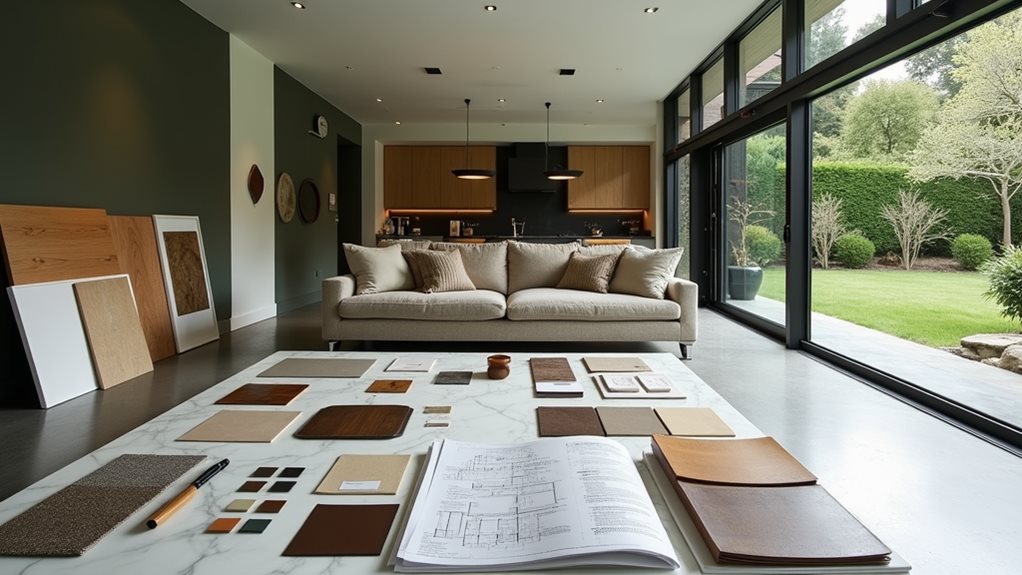
Selecting the right materials and finishes for your living room extension isn't just about aesthetics – it's an essential decision that'll impact your space's longevity, sustainability, and overall value.
When choosing sustainable materials, consider regenerative options like timber for structural elements and hemp for insulation, which offer excellent eco-friendly benefits while reducing your carbon footprint.
For flooring, you'll find versatile options that blend durability with style. Luxury Vinyl Plank provides modern water resistance, while polished concrete offers timeless appeal.
When it comes to eco friendly finishes, explore alternative wall treatments like clay- or lime-based plasters that create an organic feel while ensuring your space remains breathable.
Remember to prioritize materials that'll stand the test of time – investing in quality now means you'll enjoy your extension for years to come.
Natural light and proper ventilation serve as the cornerstones of a well-designed living room extension, dramatically influencing both your comfort and energy efficiency.
You'll want to strategically position windows and skylights to maximize sunlight throughout the day, while implementing smart ventilation strategies through cross-ventilation design and operable windows.
Consider using light-colored surfaces and sheer window treatments to enhance natural light distribution across your space.
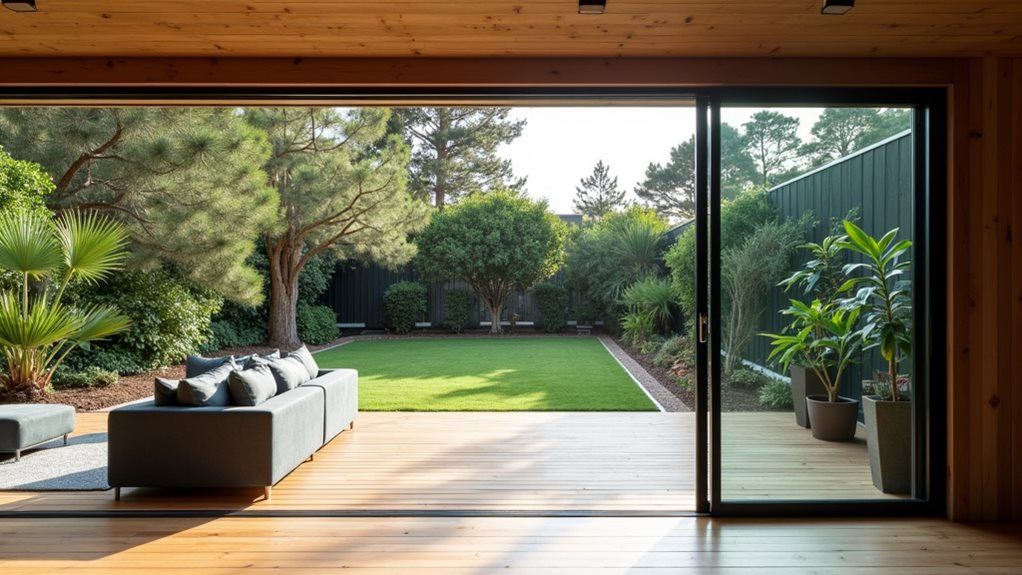
To create a truly harmonious living space, the boundary between your indoor and outdoor areas should feel virtually nonexistent.
You'll achieve indoor outdoor harmony by incorporating oversized glass doors and windows that create an uninterrupted visual flow. Select matching materials and textures that extend from your interior to your exterior spaces, ensuring cohesive aesthetics throughout.
Transform your outdoor area into a natural extension of your living room by arranging furniture with purpose and intention.
You'll want to mirror your interior layout while incorporating weather-resistant pieces that complement your indoor decor. Enhance the connection by using similar plants both inside and out, and choose unified color palettes that flow seamlessly between spaces.
Consider adding natural elements like wood and stone to bridge the gap between both environments.
Your living room extension isn't just about adding square footage – it's about transforming your everyday living space into an extraordinary sanctuary. While you'll need to navigate through permits, budgets, and design decisions, the end result will blend indoor comfort with outdoor beauty. Whether you've chosen a modern glass-walled haven or a cozy traditional space, your well-planned extension will reward you with years of enhanced living and increased property value.